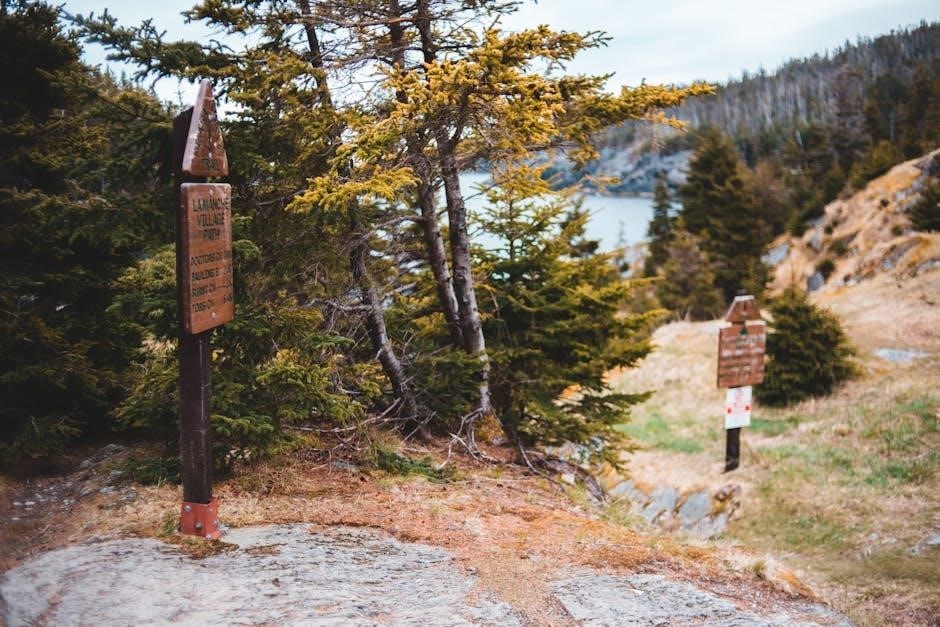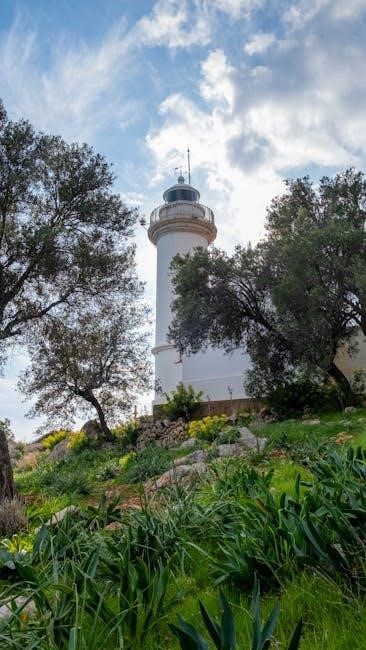This quick guide and calendar are essential for anyone looking to maximize their vegetable gardening success in Zone 10. Zone 10 has a long growing window for gardening, with a last frost date of January 30th or earlier and a first frost date as late as November 30.
Understanding Zone 10 Climate
Zone 10 presents a unique climate profile that significantly influences gardening practices. Characterized by mild winters and warm, humid summers, Zone 10 experiences minimal frost, with the last frost typically occurring around January 30th or earlier. This extended growing season allows for year-round cultivation of various vegetables, herbs, and fruits. However, the intense summer heat necessitates careful consideration of plant selection and watering strategies.
Understanding the specific nuances of Zone 10’s climate is crucial for successful gardening. The absence of prolonged cold periods means that many frost-sensitive plants can thrive, but the high temperatures can also stress certain crops. Gardeners must adapt their planting schedules and techniques to accommodate these conditions, ensuring optimal growth and yield.
Moreover, regional variations within Zone 10 can further influence gardening decisions. Coastal areas may experience higher humidity and milder temperatures, while inland regions may face greater temperature fluctuations. Therefore, it’s essential to consider the specific microclimate of your garden when planning your planting strategy.
Zone 10 Planting Calendar Overview
A Zone 10 planting calendar serves as a vital tool for gardeners, outlining the optimal times to sow seeds and transplant seedlings for various vegetables and herbs. This calendar leverages the region’s extended growing season, characterized by minimal frost and warm temperatures, allowing for year-round gardening opportunities. However, the calendar must account for the intense summer heat, which can impact plant growth.
Generally, warm-season crops like tomatoes, peppers, and eggplants are best transplanted in early spring, around March, while herbs such as basil, oregano, and mint can be planted outdoors around the same time. Cool-season crops, such as lettuce, spinach, and kale, thrive during the cooler months of fall and winter.

The planting calendar also guides gardeners on succession planting, a technique that involves planting crops in intervals to ensure a continuous harvest throughout the year. By carefully following the calendar, gardeners can maximize their yields and enjoy a diverse range of fresh produce from their Zone 10 gardens.

Vegetables to Plant in Zone 10
Zone 10’s mild climate allows for a wide variety of vegetables to thrive throughout the year. Gardeners can cultivate both warm-season and cool-season crops, providing a continuous harvest. Warm-season favorites include tomatoes, peppers, eggplants, cucumbers, and sweet potatoes. These vegetables flourish during the long, sunny days of spring and summer.
For cooler months, consider planting beets, broccoli, Brussels sprouts, cabbage, cauliflower, collards, kale, mustard greens, and turnips. These crops tolerate cooler temperatures and shorter days, providing fresh produce during fall and winter. Leafy greens like arugula and Asian greens also do well in Zone 10’s cooler seasons.
Certain vegetables, such as beans and corn, can be planted multiple times throughout the year for successive harvests. By carefully selecting vegetables suited to the current season and utilizing succession planting techniques, Zone 10 gardeners can enjoy a diverse and abundant harvest year-round. Don’t forget to consider the specific needs of each vegetable, such as sunlight, water, and soil requirements, to ensure optimal growth.
Herbs to Plant in Zone 10
Zone 10’s warm climate is ideal for growing a wide range of herbs, adding fresh flavors to your culinary creations year-round. Many herbs thrive in the consistently warm temperatures and abundant sunshine. Basil, with its aromatic leaves, is a popular choice and can be planted outdoors in March.

Other excellent options include oregano and mint, both known for their versatility and ease of growth. Rosemary, thyme, and sage are also well-suited to Zone 10’s climate, providing fragrant foliage and culinary delights. Consider planting cilantro and parsley for fresh additions to your favorite dishes. These herbs often thrive in slightly cooler conditions.
For gardeners looking for something a bit different, consider growing lemongrass, lavender, or chamomile. These herbs offer unique flavors and aromas and can also be used for medicinal purposes. When planting herbs, be sure to provide well-drained soil and plenty of sunlight. Regular harvesting encourages continued growth, ensuring a constant supply of fresh herbs for your kitchen.

Best Practices for Direct Sowing in Zone 10
Direct sowing, planting seeds directly into the garden soil, is a great way to start many vegetables and herbs in Zone 10. To ensure success, it is important to select varieties that thrive in warm weather and follow a few key practices. Begin by preparing the soil, ensuring it is loose, well-draining, and free of weeds.
Amend the soil with compost or other organic matter to improve fertility and moisture retention. Check the seed packet for recommended planting depth and spacing, and sow seeds accordingly. Water gently after planting, keeping the soil consistently moist until germination. Protect seedlings from pests and diseases by using row covers or organic pest control methods.
Thin seedlings as needed to provide adequate space for growth. Consider the timing of your planting, as some crops prefer cooler temperatures or specific day lengths. Planting in the early morning or late afternoon can help prevent seeds from drying out in the hot sun. Monitor soil temperature to ensure it is optimal for germination. With careful planning and attention, direct sowing can be a rewarding way to grow a bountiful garden in Zone 10.
Best Practices for Transplanting in Zone 10
Transplanting, or moving seedlings from a starter tray to the garden, is a common practice in Zone 10 gardening. To ensure successful transplanting, it’s crucial to harden off seedlings gradually by exposing them to outdoor conditions for increasing periods before planting. This helps them adjust to the sun, wind, and temperature changes.

Choose a cloudy day or late afternoon for transplanting to minimize stress on the plants. Dig holes slightly larger than the root ball and amend the soil with compost or other organic matter. Gently remove the seedlings from their containers, being careful not to damage the roots. Place the seedlings in the holes and backfill with soil, pressing lightly to remove air pockets.
Water thoroughly after transplanting and apply a layer of mulch to help retain moisture and suppress weeds. Protect young transplants from pests and diseases by using row covers or organic pest control methods. Monitor the plants closely for signs of stress, such as wilting or yellowing leaves, and provide extra care as needed; With proper technique, transplanting can give your plants a head start in the Zone 10 garden.

Soil Preparation for Zone 10 Gardens
Preparing the soil is a critical step for successful gardening in Zone 10. Start by testing the soil’s pH level, aiming for a slightly acidic to neutral range (6.0 to 7.0). Amend the soil with organic matter, such as compost, well-rotted manure, or leaf mold, to improve its structure, fertility, and drainage. This is especially important in Zone 10, where soils can be sandy or heavy clay.
Remove any rocks, weeds, and debris from the planting area. Till the soil to a depth of at least 12 inches to loosen it and improve aeration. Incorporate the organic matter evenly throughout the soil. Consider adding slow-release fertilizer to provide essential nutrients to your plants.

If you have heavy clay soil, add gypsum or coarse sand to improve drainage. For sandy soil, incorporate more organic matter to help retain moisture. Create raised beds or mounds if necessary to improve drainage and prevent root rot. Remember, healthy soil is the foundation of a thriving garden, so take the time to prepare it properly before planting in Zone 10.
Watering Strategies for Zone 10
Effective watering is crucial for Zone 10 gardens, given the warm climate and potential for dry spells. Understanding your soil type is the first step. Sandy soils drain quickly, requiring more frequent watering, while clay soils retain moisture longer, reducing the need for watering but increasing the risk of waterlogging.
Water deeply and less frequently to encourage deep root growth, making plants more drought-tolerant. Early morning watering is best to minimize evaporation and allow foliage to dry before nightfall, reducing the risk of fungal diseases. Use a soaker hose or drip irrigation to deliver water directly to the roots, minimizing water waste and weed growth.
Monitor soil moisture regularly using a moisture meter or by simply sticking your finger into the soil. Adjust watering frequency based on weather conditions, plant needs, and soil type. Mulching around plants helps retain soil moisture and reduces evaporation. Be mindful of overwatering, as it can lead to root rot and other problems. Adapting your watering strategy to Zone 10’s unique conditions is key to a healthy, thriving garden.
Pest and Disease Control in Zone 10

Maintaining a healthy garden in Zone 10 requires proactive pest and disease management; Start by selecting disease-resistant plant varieties suited to the local climate. Regular garden inspections are crucial for early detection of problems. Remove any diseased or infested plant material immediately to prevent spread.
Encourage beneficial insects like ladybugs and lacewings, which prey on common garden pests. Consider using organic pest control methods such as neem oil, insecticidal soap, or diatomaceous earth. These are less harmful to beneficial insects and the environment.

Proper watering and soil drainage are essential for preventing fungal diseases. Avoid overhead watering, which can create a humid environment that favors disease development. Ensure good air circulation around plants by spacing them appropriately and pruning regularly.
Rotate crops annually to disrupt pest and disease cycles. Use companion planting to deter pests and attract beneficial insects. A healthy, well-maintained garden is naturally more resistant to pests and diseases. By implementing these strategies, you can minimize the need for harsh chemicals and maintain a thriving ecosystem in your Zone 10 garden.
Specific Planting Recommendations for March
March in Zone 10 is an excellent time to transplant warm-season vegetables like tomatoes, peppers, and eggplants. Ensure the soil is well-prepared and enriched with compost before transplanting. Water thoroughly after planting to help the seedlings establish.
For herbs, March is ideal for planting basil, oregano, and mint outdoors. These herbs thrive in the warm temperatures and abundant sunshine of Zone 10. Consider planting them in containers or raised beds for better control over soil conditions.
Direct sowing is also suitable for certain vegetables in March. Plant beans, cucumbers, and squash seeds directly into the garden. Keep the soil consistently moist until germination. Thin seedlings as needed to provide adequate spacing for growth.
Continue to monitor for pests and diseases, and take appropriate action as needed. Mulch around plants to conserve moisture and suppress weeds. With careful planning and attention, your Zone 10 garden can flourish in March, providing a bountiful harvest throughout the growing season. Remember to check local resources for specific planting dates and recommendations.
Resources for Zone 10 Gardeners
To further assist Zone 10 gardeners, several valuable resources are available. Local agricultural extension offices offer personalized advice and workshops tailored to the specific needs of the region. These offices provide information on soil testing, pest identification, and recommended planting schedules.
Online gardening forums and communities are another excellent source of information. Connect with experienced gardeners in Zone 10 to share tips, ask questions, and learn from their successes and failures. Many online resources also offer planting calendars and guides specific to Zone 10.
Consider exploring local nurseries and garden centers for region-specific advice and plant selections. These businesses often carry varieties that are well-suited to the Zone 10 climate. Consult with their knowledgeable staff for guidance on choosing the right plants and addressing common gardening challenges.
Books and magazines dedicated to gardening in warm climates can also provide valuable insights. Look for publications that focus on Zone 10 or similar regions. These resources offer in-depth information on various gardening topics.




Be the first to reply